Propagating aloe vera is fun and easy, and it’s a great way to expand your collection. I’ve had my plant for over 20 years, and I’ve multiplied it many times over. In fact, most of my friends and family have babies from it.
In this complete guide, I’ll explain exactly how to do it. I will give you detailed step by step instructions to guide you through the entire process – from separating the pups, all the way through to potting up your new plants.
You’ll learn exactly when and how to propagate your aloe vera, including the different methods you can use, and my expert tips and advice so that you will have the best success possible.
Aloe Vera Propagation Methods
There are three ways you can propagate your aloe vera. They are: by division, taking cuttings, or from seed.
- Division – You can divide your plant to create more. This is the easiest and most common way to do it, and the one that I will show you how to do in this guide.
- Cuttings – It’s also possible to grow aloe vera from cuttings, though it is a more advanced technique because it can be tricky.
- Seeds – If the flowers are pollinated, they will produce seeds that you can sow. But it’s very uncommon for them to bloom indoors, and this is by far the slowest propagation method.
What Are Aloe Vera Pups?
Aloe vera pups are offshoots that form around the base of the mother. They’re also called suckers, offsets, babies, slips, runners, or sometimes plantlets.
They form at the bottom of the mother, and will pop up from underneath the soil. Once they’re mature enough, you can propagate aloe vera offshoots to make new plants.
If yours has never produced babies, that means it’s not old enough or the conditions aren’t right. To encourage it to grow faster, make sure you give your aloe vera the proper care.

When To Propagate Aloe Vera
You can divide your aloe vera at any time during the year to propagate it. But you must wait until the pups are mature before you remove them, otherwise they probably won’t survive on their own.
The only way to tell if they are ready is to check the roots. To do that, carefully slide the mother out of the pot. Then brush away the soil until you can see the bottoms of the babies.
The pups should have their own root system that’s at least 2″ long. If they are all really small, or they just have tiny nubs, then put the plant back into the pot and give them a few more months to mature before you try propagating them again.
Related Post: How To Store Aloe Vera (Leaves Or Gel)
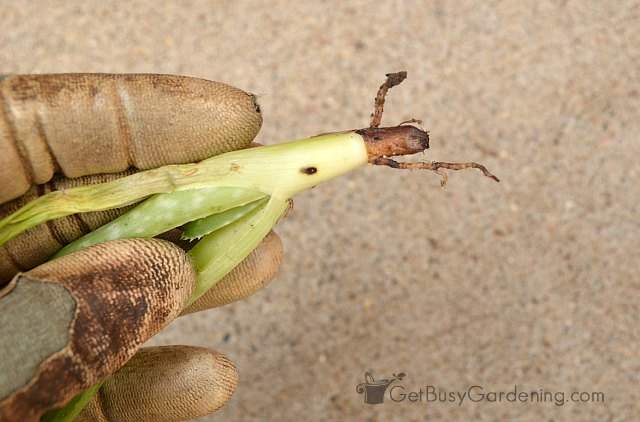
How To Propagate Aloe Vera Plants Step-By-Step
Below I will walk you through the detailed steps for how to propagate your aloe vera by division. Don’t worry, you don’t need to buy a bunch of expensive equipment, you probably already have most of what you need on hand.
Supplies Needed:
- Aloe vera plant with mature offshoots
- Well-draining potting soil
- Pair of clippers
- Hand trowel
- Metal chopsticks (optional)
Step 1: Remove the plant from the pot: Gently remove your aloe vera from the pot, or carefully dig it up if it’s outdoors. If it’s stubborn, you can run a hand trowel along the inside of the container to loosen it. Then brush away as much of the excess soil as you can.
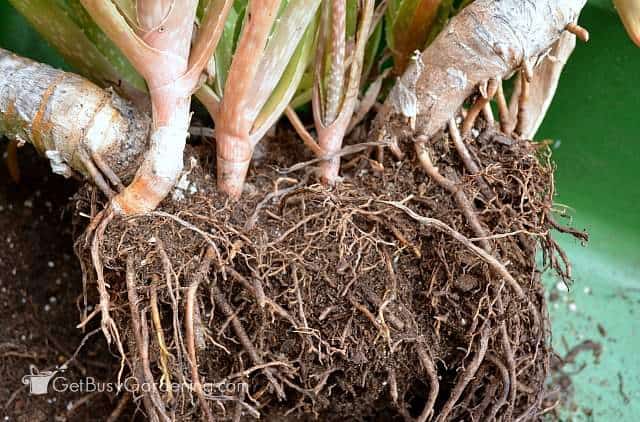
Step 2: Untangle the roots – Loosen the rootball to uncover the spot where the pups are attached to the mother plant. Try your best not to break any of the delicate baby roots in the process.
This can be difficult and take some time, so you’ll need to be extremely patient here. I find that using a metal chopstick makes the job much easier.
Related Post: How To Properly Water Your Aloe Vera
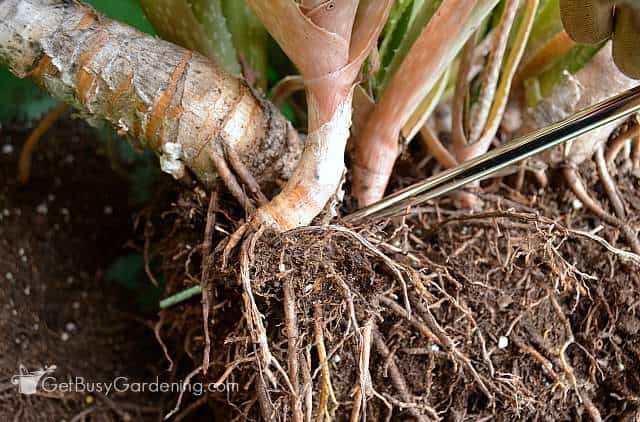
Step 3: Cut the pup off – If the offshoot is still attached to the mother, sever the connection with a sharp knife or pair of clippers. Then finish untangling them from your aloe vera to separate and propagate them, if necessary.
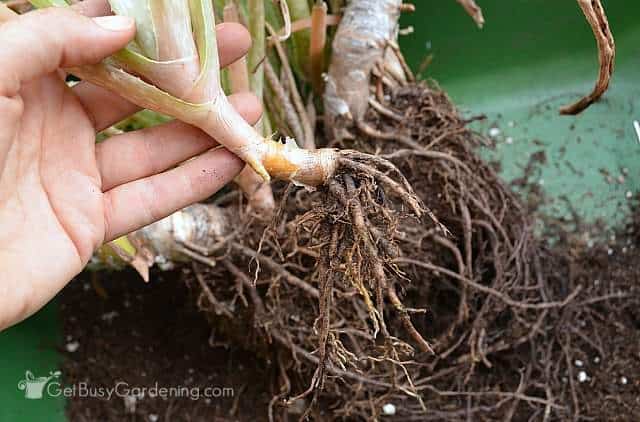
Step 4: Repot the mother – Once you’re done dividing the pups, you can simply put the mother back into the original container, and top it off with fresh potting soil. Otherwise, this is a great time to repot your aloe vera plant if you want to.
Related Post: How To Make DIY Aloe Vera Gel At Home
How To Pot Up Your Aloe Vera Babies
Use a clean 4″ container for each offshoot, or you can group several into one larger pot. Position them at the same depth they were before, making sure to cover all of the roots.
You can purchase potting soil that’s specifically made for them, or use a gritty mix, which will give them extra drainage. Pack it in tightly to hold the new plant in place, and give it a light drink of water.
Related Post: How & When To Harvest Aloe Vera
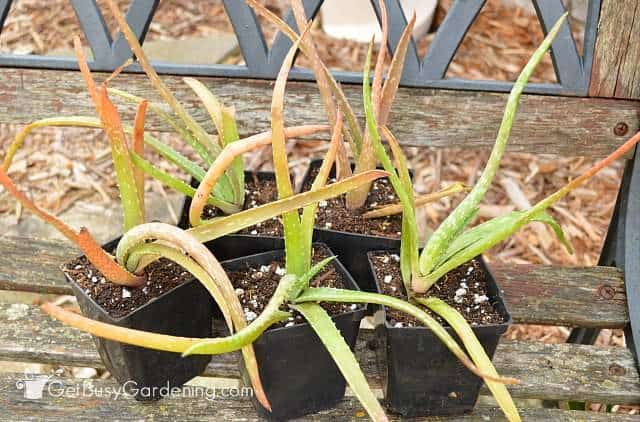
FAQs
The main way that aloe vera reproduces asexually is by sending out runners around the base. But mature plants can also produce viable seeds when the flowers are pollinated.
It is possible to propagate aloe vera from a single leaf, but part of the stem must still be attached, and it’s a difficult process. However, it is not possible to propagate sections or pieces of the leaves.
Now that you know the steps for propagating your aloe vera, you’ll have tons of new babies! Be sure to share them with friends, they make great gifts too.
Do you want to learn how to multiply all of your plants? Then my Plant Propagation eBook is for you! It will show all you need to know to get as many new plants as you want from your existing ones. Grab your copy today!
More About Plant Propagation
Share your tips for how to propagate aloe vera in the comments section below.
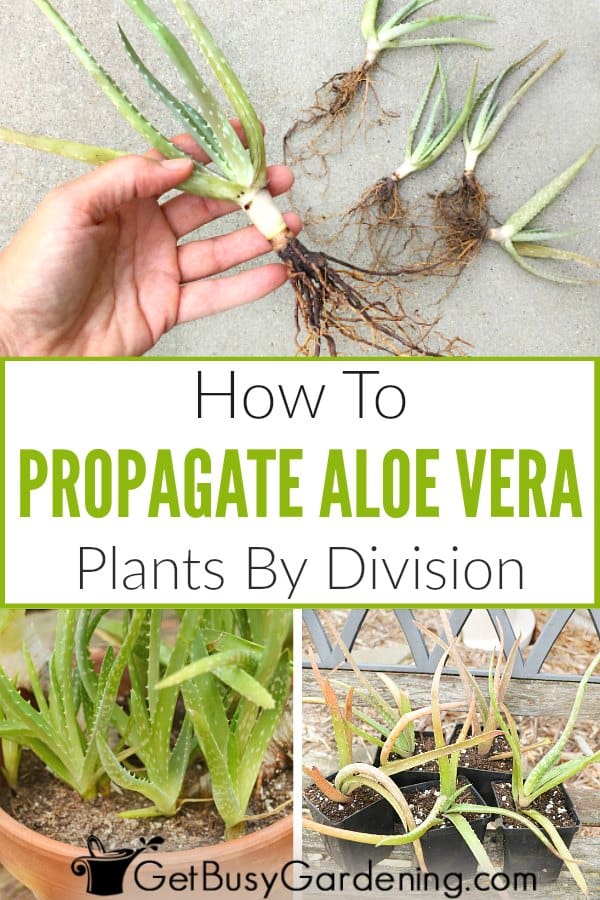
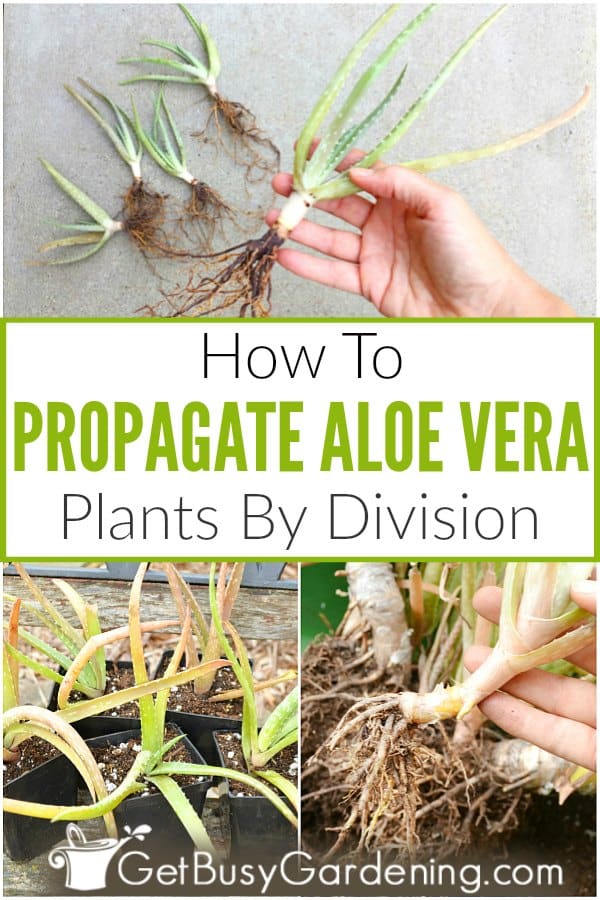
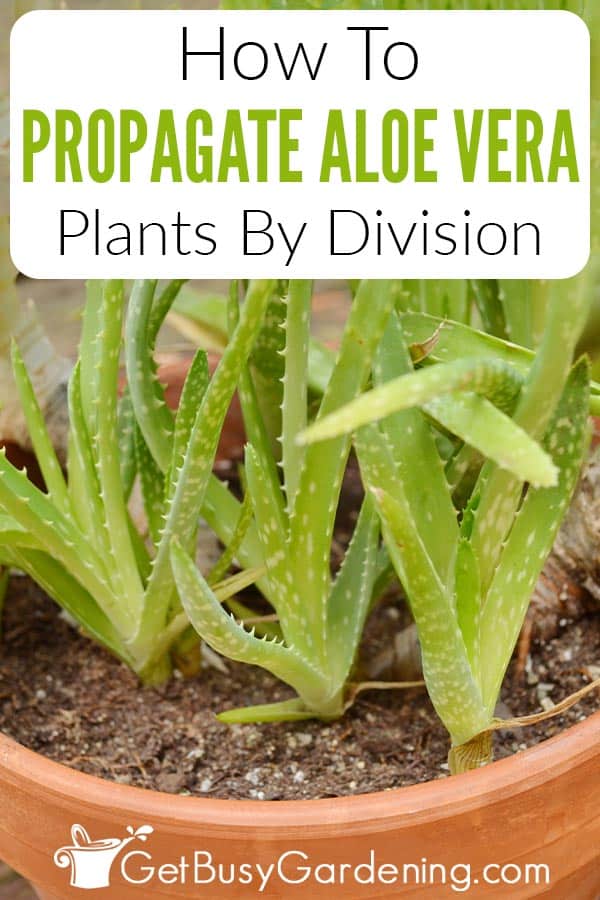

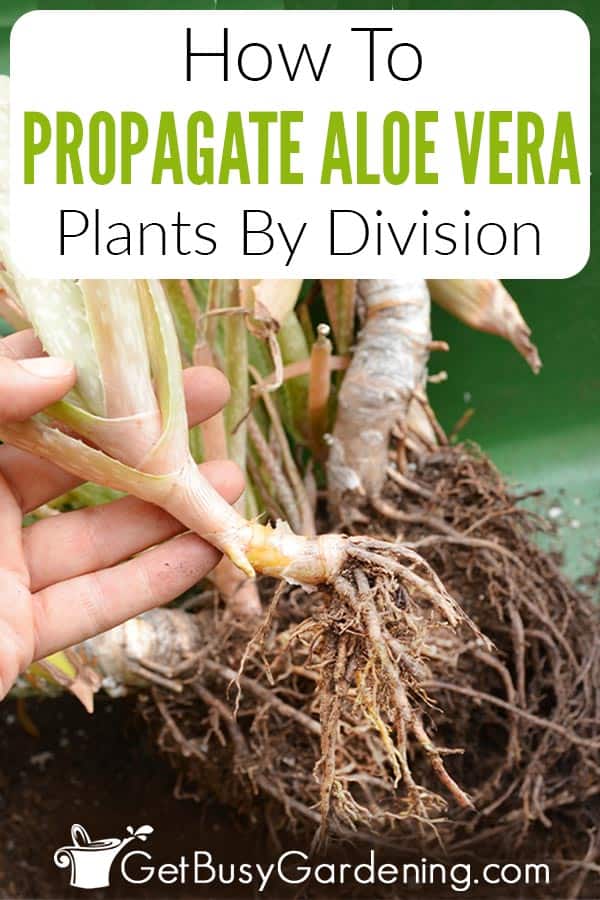
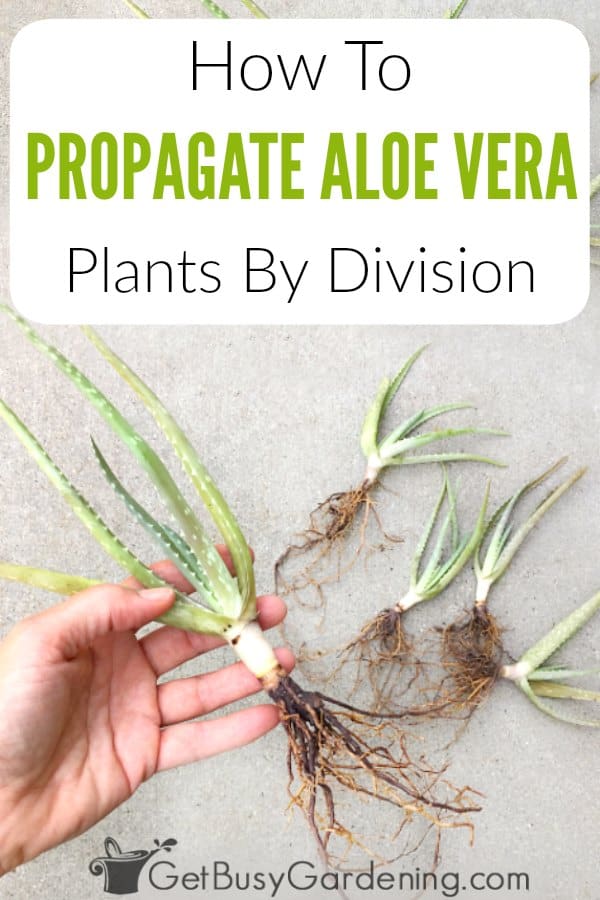




JACKIE Rossouw says
A lady down the road cut back her aloes and asked all the neighbours if they would like the cuttings. I went and picked up 7 (good number) but I thought one could grow aloes without the root system. None of the aloes I have from her have roots they seem to be just large branch sections that were hacked off the main plant.
Is it not worth to try grow these poor things (I hate letting plants die)?
The aloe branches are about 50cm high – one of them is about 80cm and has a lovely flower bud forming 🙁
Thanks.
Amy Andrychowicz says
Aloe stems don’t need to have roots to propagate them. Look for small nubs along the stem, that’s where the new roots will form. Here are the exact steps for how to root the cuttings. Good luck!